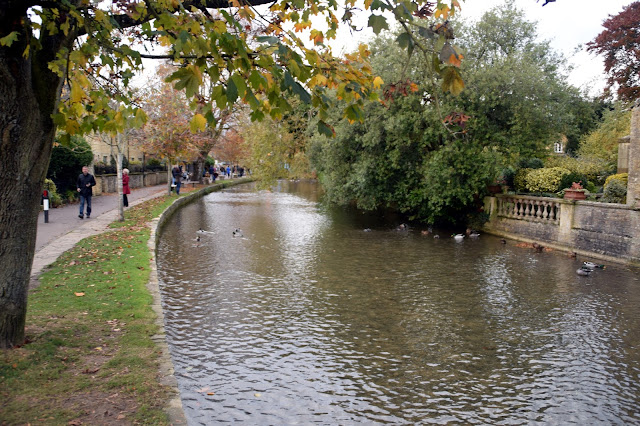The Cotswolds is set in the heart of England, famous for its honey coloured stone architecture and idyllic village scenes.
Regularly voted one of the prettiest villages in England, Bourton on
the Water has a unique appeal to visitors and residents alike, there is
plenty to see and do with a wealth of attractions and shops, restaurants
and tea rooms, or simply for you to enjoy some tranquil time by the
River Windrush with its beautiful bridges throughout.
http://www.bourtoninfo.com/
The Bridges
On the western edge of the village lies Bourton Bridge built in 1806
and widened in 1959. An inscription on the downstream side reads ‘The Fosseway has passed here since Roman times. Here is Buruhford of Salmonsbury. 8th century AD‘.
In the village centre the earliest stone built bridge is Mill Bridge
(also known as Broad Bridge) built in 1654 and crossing where one of the
fords existed.
Following downstream the footbridge in the middle of the village green, High Bridge was built in 1756.
Further downstream is New Bridge (also known as Moore Bridge) a
vehicle crossing, traversing another ford. It was built in 1911 by local
benefactor George Frederick Moore who also built the Victoria Hall and
our local Cottage Hospital. Alongside it is Payne Bridge, a foot
crossing built in 1756.
Downstream again, the last and most recently erected footbridge
opposite the Old New Inn is coronation Bridge, built in 1953 to replace a
wooden bridge that had been on this site since the eighteenth century
but had collapsed whilst being crossed by some unsuspecting day visitor!
The ford located here is still in use today.
The River
Bourton-on-the-Water’s most prized feature is its tranquil
river. Fed from many springs, its source is approximately ten miles from
the village, and even in the 1976 drought the flow continued.
The Windrush meanders through some of Britain’s most charming
countryside where unspoiled fields and natural woodland complement the
expression of rural England. Where the river enters the village centre,
over the rapids next to the Old Mill, its clear waters flow under a
miscellany of arched stone bridges past the green with its banks of
Cotswold stone.
It then travels down to other villages such as Windrush, Burford and
Witney where soon after, the Windrush joins the Thames, for its journey
to London and the sea.
Although the date is not recorded, it is believed that the river,
which has an average depth of only ten inches as it flows through
Bourton, originally passed some 200 yards to the south of its present
course, having been diverted to power a new mill many years ago.
The earliest evidence of a Christian presence on this site in
Bourton-on-the-Water goes back as far as 709AD when a wooden church was
built on land donated by the local king, centred to the Abbey of
Evesham.
1110 AD saw the construction of the first stone church of Norman
design. Since then there have been several changes of appearance. Under
the chancel (the east end of the church), there is a twelfth-century
crypt, said to be connected by a tunnel to the Old Manor House across
the High Street.
The only visible part of the old church is the chancel, built in 1328
by Walter de Burhton. The church was then dedicated to St Lawrence, a
fourth century Christian martyr; his story is recorded on a window-ledge
near the organ.
A drawing of 1780 shows the church with a central tower, between the
nave (where the congregation sit) and the chancel. It shows the ‘Clapton
Aisle, where the present porch is located; this was for residents of
Clapton on the Hill during the period when their own ancient church of
St James’ was for a time derelict. However, in 1784, the Norman church
was largely replaced with one in the neo-classical style, with a new
heavy tower with clock and bells, still standing today.
Further change came in the 1870’s with the construction of the
present nave, followed by the North Aisle and St George’s chapel, now
containing memorials to the dead of the two world wars of the twentieth
century. This Victorian legacy includes the nave roof, said to be one of
Gloucestershire’s finest examples of a king-post roof.
The twentieth century also left its mark with a fine painted ceiling
in the chancel, and the ornate oak screen, separating the cancel from
the nave. A very fitting contribution from a local poet and artist was
added to the west wall at the time of the Millennium.
Today the parish Church remains the focus of a lively worshipping
community in the village of Bourton-on-the-Water, extending a warm
welcome to visitors.

























No comments:
Post a Comment